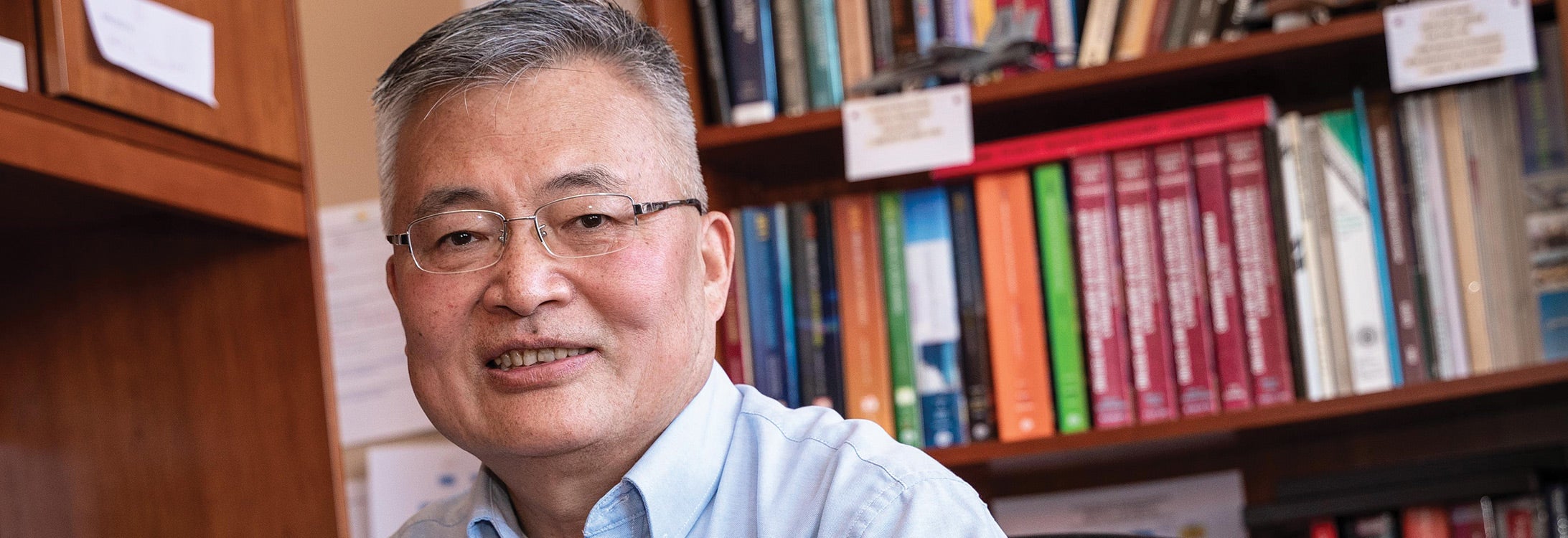Project tests concrete mixes using recycled materials
An ECU construction management professor and a local construction company have teamed up in search of a solution to a problem facing the North Carolina Department of Transportation.
The NCDOT’s State Transportation Improvement Plan identifies approximately 100 bridges and more than 700 miles of roadways in eastern North Carolina’s 29 counties that need to be rebuilt within the next 10 years.
“That means a lot of concrete will be used,” said George Wang. “And this area has a lack of quality aggregate, the crushed stone used for infrastructure.”
Concrete is a mixture of fine and coarse aggregate and water bonded with cement. In some cases, he said, contractors drive to quarries 100 miles west to get the material they need. That means time, fuel, emissions, and wear and tear on vehicles and roadways, so the NCDOT was interested in studying alternative formulations for concrete that would be more sustainable.
Approximately 10 states, Wang said, already allow the use of recycled aggregate (old concrete) to make new concrete.
Before the NCDOT can start using the material in structural applications, “research must be done to determine any negative effects that may be caused,” said Brian Hunter, state laboratory operations manager for NCDOT’s Materials and Tests Unit. “They also need to determine how feasible it will be to maintain enough stockpiles of quality material.”
Wang submitted a research proposal in 2015 and was awarded the project in 2016.
Since then, with assistance from industry partner S.T. Wooten Corp., a highway construction and engineering firm, he has been testing concrete composed of varying ratios of recycled aggregate and steel slag, a byproduct of steel production.
The testing was labor intensive, with large amounts of material that had to be crushed and screened and then cast into cylinders with varying compositions for physical and chemical testing. Wang was there in person when an aging bridge was demolished.
“We crushed the material and removed the rebar reinforcement,” Wang said. “Then we brought it to the lab to sieve it and separate the fine and coarse material.”
The new mixes were tested for strength, brittleness and slump (a measure of the consistency and workability of freshly made concrete) as well as for contamination and leeching. Further testing for long-term strength was conducted at seven-, 28- and 90-day intervals.
“The results are very good,” Wang said. “Blending those recycled materials together makes a better-quality material.”
Graduate student Hang Ding was invaluable to the project, as was the participation of S.T. Wooten and the use of its concrete lab in Garner, Wang said. The industry partnership allowed access to equipment and materials the project wouldn’t have had otherwise.
The final report on the project has been submitted to the NCDOT, and Wang said he is optimistic the agency will update its specifications to allow the use of the recycled material.
